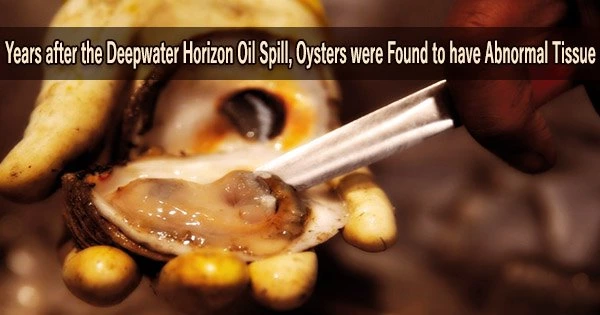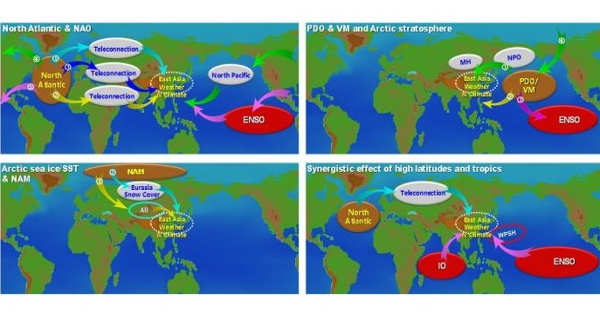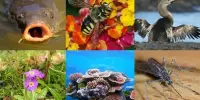The world’s greatest oil spill in history occurred on April 20, 2010, when the Deepwater Horizon (DWH) petroleum drilling rig burst off the coast of Louisiana, releasing more than 4 million barrels of oil into the Gulf of Mexico.
There has been relatively little research on the long-term repercussions of the accident, despite the fact that the short-term effects of the oil leak on local wildlife were the subject of extensive scientific study and public discussion.
Several studies have found that oysters in the area showed various tissue abnormalities and physiological changes, such as decreased growth, altered lipid metabolism, and reduced reproductive success, likely as a result of exposure to the oil and its toxic compounds.
In a paper published this week in PLOS ONE, researchers from the California Academy of Sciences, Nova Southeastern University (NSU), South Dakota School of Mines and Technology (SDSMT), and Kent State University show that Eastern oysters from the Gulf Coast have significantly higher rates of metaplasia a condition that can cause debilitating tissue abnormalities than those from a region unaffected by the DWH oil spill, even several years after the event, raising concerns about the health of the economically and ecologically important species.
“It’s worrying to find such a high incidence of metaplasia,” says study author and Academy Curator of Invertebrate Zoology and Geology Peter Roopnarine, PhD. “Eastern oysters are not only a major link in the ecosystem’s food chain, they are also ecosystem engineers, forming oyster reefs that shelter other organisms and protect coastal areas from storm surges.”
As long as we continue extracting petroleum from our planet’s oceans, we will continue to expose coastal ecosystems to contamination. Hopefully this study and its samples which are now stored in the Academy’s scientific collections for future researchers to use will lead to a better understanding of how oil spills are directly impacting those communities.
Peter Roopnarine
When an organism experiences environmental stress, some of its differentiated cells will change type, a phenomenon known as metaplasia. Because differentiated cells play specific jobs, such as facilitating nutrition intake in our gut, transforming into a new kind can harm an organism’s general health.
“In humans, metaplasia is commonly found in lung cells exposed to the extreme stress of cigarette smoke,” says lead author and NSU professor Deanne Roopnarine, DPM. “When my brother Peter mentioned he was researching the impact of the Deepwater Horizon oil spill on oysters, I wondered whether they might show signs of metaplasia or other histological impacts and ultimately joined the project.”
After being collected by study author and SDSMT geologist Laurie Anderson, PhD, the oysters were sent to Professor Deanne Roopnarine and her undergraduate lab students, who spent months shucking them, sectioning out their internal tissues, fixing the tissues to slides, and staining the slides to compare the cellular structures between Eastern oysters from the Gulf Coast and those from Chesapeake Bay that were unaffected by the DWH oil spill.
When compared to oysters from the Chesapeake Bay, including oysters taken as recently as 2013, three years after the DWH oil spill, the researchers discovered that oysters from the Gulf of Mexico study sites had considerably greater rates of metaplasia along their digestive and respiratory tracts.
“The differences we found between the oysters was devastating,” Professor Deanne Roopnarine says. “Those from Chesapeake Bay had beautiful ciliated gills, which they use to help filter food particles, while some from the Gulf Coast had no cilia at all. When I saw that I thought, how are these animals feeding and surviving?”
According to one explanation, the oysters are surviving because they have developed tolerances for metaplasia and other effects brought on by the petroleum extraction industry, which has been active in the area for almost a century.
However, the researchers claim that there is insufficient baseline data without tissue samples from Eastern oysters before the DWH oil disaster to assess whether or not the rates of metaplasia in Gulf Coast populations were directly impacted by the incident.
The research team hopes that their findings will motivate more extensive, long-term monitoring programs for Eastern oysters and other significant but underappreciated species along the Gulf Coast, which may be adversely affected by ongoing oil spills in the area, like those being reported in the wake of Hurricane Ida.
“As long as we continue extracting petroleum from our planet’s oceans, we will continue to expose coastal ecosystems to contamination,” Curator Peter Roopnarine says. “Hopefully this study and its samples which are now stored in the Academy’s scientific collections for future researchers to use will lead to a better understanding of how oil spills are directly impacting those communities.”
















